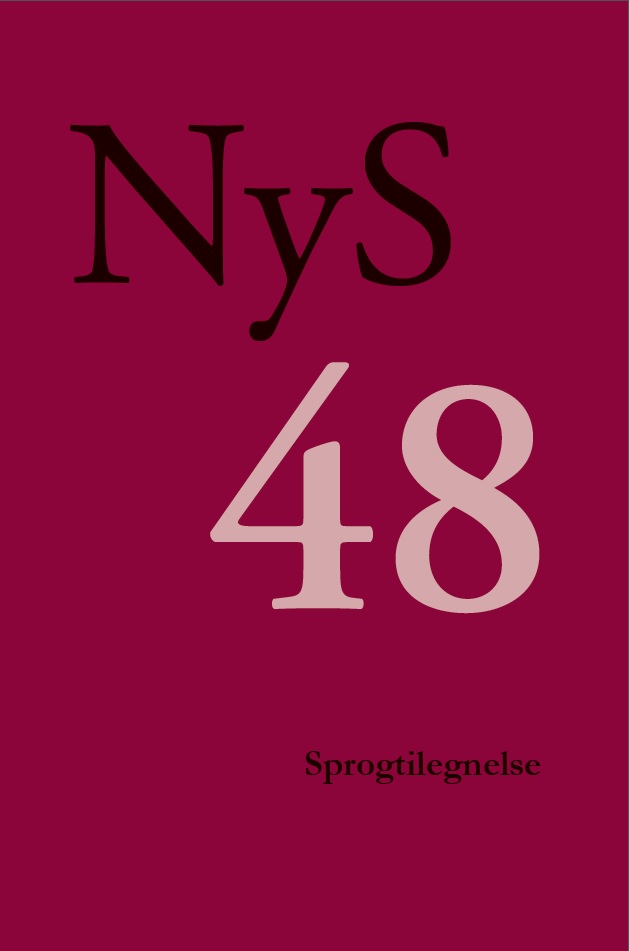Tilegnelse af fortællerperspektiv og referentperspektiv i dansk tegnsprog: introduktion af en ny referent
DOI:
https://doi.org/10.7146/nys.v48i48.21134Abstract
Linguistic perspective can be used either to denote the way en event is described as seen from the perspective of one of the referents, or as a term for various linguistic means used to indicate whether a referent is new or given and whether an event is foreground or background. In this article, the former type is called referent perspective, the latter narrator perspective. In Danish Sign Language (DTS) narrator perspective is expressed by the signer’s eye contact with the addressee, the sign EN (‘one, a’) to indicate a new, prominent referent, and nonmanual signals indicating topicalization and accessibility. Referent perspective is expressed by combinations of predicates of motion and location with gaze, facial expression, and head and body orientation that represent a referent. Narratives elicited from DTS-signing adults by means of cartoons are shown to have a strong emphasis on referent perspective compared with narratives in spoken Danish elicited by means of the same cartoons. DTS-signing deaf children of six to nine years of age are shown to be well underway in acquiring the use of en, but they struggle with the expression of the referent perspective, especially the use of gaze direction and facial expression. The results are discussed in relation to Slobin’s (1996) notion rhetorical style and the role of iconicity in acquisition.Downloads
Published
How to Cite
Issue
Section
License
Forfatteren/forfatterne og NyS har ophavsret til de artikler og anmeldelser der bringes i tidsskriftet. NyS har ophavsretten til den udgivne version af tidsskriftet. Forfatteren har ophavsretten til sin egen tekst. Forfattere kan arkivere den publicerede artikel på deres institutions forskningsarkiv (Institutional Repository) eller en privat hjemmeside, når forfatteren samtidig linker til artiklen med den officielle DOI.
For artikler publiceret i NyS tillades at læsere kan downloade, kopiere, udskrive, søge eller linke til og citere fra artikler til ethvert lovligt formål. Artikler kan frit deles og linkes til på forsknings- og undervisningsnetværk (så som Blackboard, Moodle, Canvas o.a.). Link foretrækkes fordi det giver oplysning om brug af tidsskriftets artikler, og fordi det anerkender tidsskriftets redaktionelle arbejde. NyS tillader ikke at læsere bruger artikler eller dele af dem i egne artikler uden at citere, eller at læsere på anden vis anvender dem til kommercielle formål.





